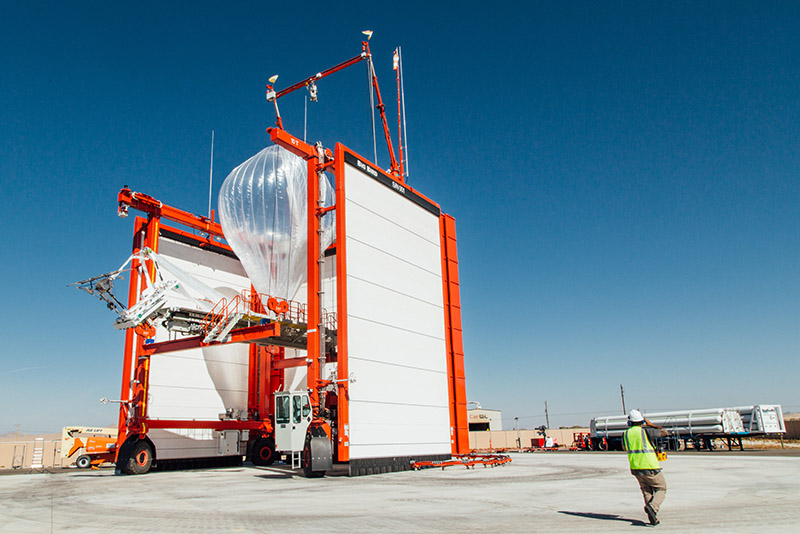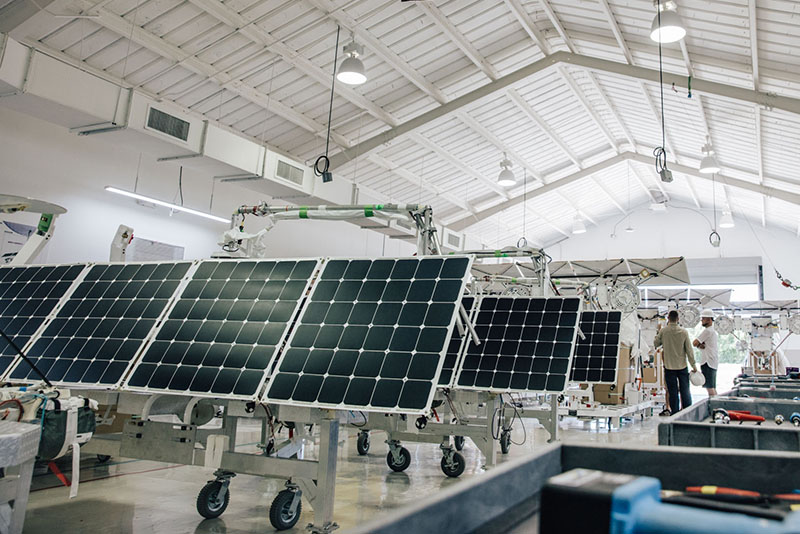By Alison Buckholtz
When Mugo Kibati, the chief executive officer of Telkom Kenya, began to understand the magnitude of the COVID-19 pandemic, he looked heavenward for answers.
He wasn’t seeking divine intervention. Instead, he was searching for balloons. These balloons—floating cell sites that hover about 60,000 feet (about 20 kilometers) above ground—are equipped to offer 4G connectivity to about 25 million Kenyans who lack coverage.
The onset of COVID-19 and its projected impact has made boosting of Internet access urgent across Kenya, where nearly 70 percent of the population lives in rural or remote areas without access to the Internet. Telkom Kenya and Loon, a subsidiary of Alphabet, Google’s parent company, laid the groundwork for delivery of high-altitude balloons back in 2018, when the two companies partnered to offer Kenyans Internet connectivity with wider coverage than ever in the country.
Last month, as the disease continued its spread across the globe, Loon and Telkom Kenya offered the balloons to Kenya’s government immediately and free of charge to help officials and agencies continue to operate. The service could be used, for example, to enable the connection of remote health clinics to the country’s national referral hospitals, other medical facilities, and emergency services.

Telkom Kenya’s partnership with Loon is expected to deliver Internet connectivity to some of Kenya’s most inaccessible regions.
Kenya’s government and regulatory agencies fast-tracked regulatory approval and, by early April, four of the first batch of 21 balloons, launched from Loon’s base in Puerto Rico, had arrived in Kenya, which is about the same size as California. Once all the balloons float into Kenyan airspace, Telkom Kenya and Loon will expedite the requisite network integration testing processes. The balloons’ deployment will be the first use of the solution in Africa.
After the health crisis abates, the balloons will remain in Kenya to fulfill the original commercial agreement on a sustained, non-emergency basis, connecting the country’s unserved and under-served communities, Kibati said. Telkom Kenya requires impact capital to keep the project afloat in a post-pandemic world—a world in which Kibati believes the need for reliable Internet that reaches remote communities will be greater than ever.
“The impact of this crisis will make online education, telemedicine, and digital government services the ‘new normal,’” Kibati said. “Internet-enabled balloons will offer connectivity to the tens of millions of Kenyans who live in unreachable, mountainous regions and remain disadvantaged since they are left behind. Loon’s move to help with government communications is a critical step forward during this dire period, and we need financial support to prepare for what comes next.”
Charting a Course for Digital Inclusion
Telkom Kenya’s efforts to provide Internet connectivity across Kenya started after Helios Investment Partners, an Africa-focused private equity firm, acquired a 60-percent stake in the company in 2016 through a fund in which IFC invested $25 million. The remaining 40-percent stake is held by the Government of Kenya.

Loon’s Internet-enabled balloons float around 20 km (12.4 miles) above sea level, out of range of air traffic, storms, and wildlife.
Connecting the unconnected is important in a country where the digital divide is so pronounced, Kibati said. While most Kenyans have 2G service, according to Telkom Kenya, 44 percent of the urban population has access to the Internet. In rural areas, less than 20 percent of the population is connected, according to the World Bank.
Because each Internet-enabled balloon covers a large area—roughly 30 times greater than a ground-based system—Loon can provide service to traditionally hard-to-reach or underserved regions. Loon’s balloons work by beaming Internet connectivity from ground stations to a balloon 20 kilometers overhead. The signal is then sent across multiple balloons, creating a network of floating cell sites that deliver connectivity directly to a user’s phone handset, router, or dongle.
“Loon seems to have what it takes to be a solution to the everlasting problem of connecting the unserved and underserved areas in Africa, in this case Kenya, and providing them with stable and reliable connectivity,” said Julie Owono, Executive Director of Internet Without Borders and a Fellow at the Berkman Klein Center for Internet and Society at Harvard University.
She continued: “At a time when the whole planet, including the African continent, is under lockdown, access to Internet becomes crucial…and the agility [of countries] to make this shift to digital and limit the future economic ordeals faced by their populations” will be one of the main lessons of the pandemic.
“Working as fast as we can”
Loon balloons have proven useful in disaster zones and in bringing Internet to remote areas, including in Brazil, Indonesia, New Zealand, Peru, Puerto Rico, and Sri Lanka. The company is now preparing to help Kenya throughout the pandemic, although most of its employees are working from home, said Loon’s Chief Executive Officer Alistair Westgarth.

After the pandemic abates, the Internet-enabled balloons will remain in Kenya on a sustained, non-emergency basis.
“In light of the spread of COVID-19, Telkom and Loon are working as fast as we can to deploy the Loon service in Kenya, to support the Government’s efforts to manage the current crisis in the short-term, and to establish sustainable operations to serve communities in Kenya in the long-term,” Westgarth wrote in an email. “The Loon service will help connect targeted communities to emergency services, as well as ensure enhanced and alternative communication options between loved ones, whether in isolation or in quarantine.”
Health care is one area where the Kenyan government’s ability to expand its Internet reach to those rural areas could make a difference in a crisis. That’s because the public sector is the main provider of health care services, especially for the poor. Wide disparities exist in the utilization of essential health services in remote regions as compared to urban areas.
In addition to the provision of care, linking of local systems to the national health care platform and even the registration of new births and of vital statistics among people in rural areas—which is low and often incomplete—could be achieved more easily with access to the Internet.
Kibati estimates that the Loon service could be ready for deployment after testing and a pilot phase, around the start of the third quarter of 2020. He has no doubt that Internet-enabled balloons can help usher Kenyans though a time of great difficulty.
“In a crisis like this, our services are needed more than ever, and we believe this technology can offer tremendous benefits to the entire African continent,” Kibati said. “We are quite hopeful.”
Published in April 2020
